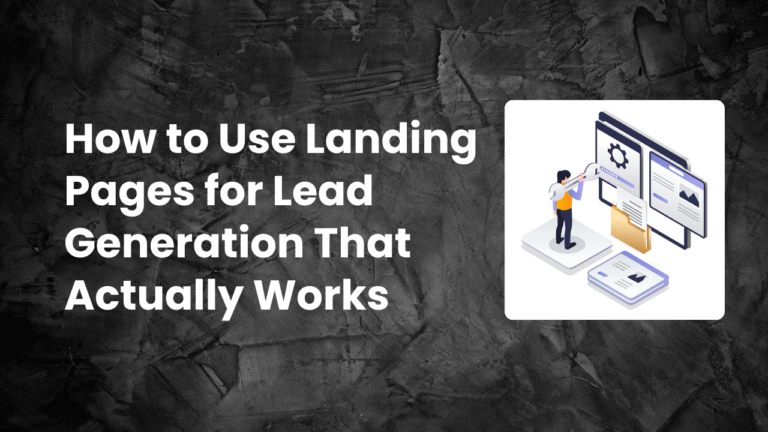Email copywriting is one of the most crucial skills any marketer, entrepreneur, or business owner can master in today’s digital world. Why? Because email remains one of the most direct, personal, and profitable ways to communicate with your audience.
Let’s look at the numbers.
According to HubSpot, 77% of marketers have seen an increase in email engagement over the past 12 months (HubSpot, 2023). Meanwhile, Litmus reports that the average ROI for email marketing is $36 for every $1 spent (Litmus, 2023). That’s a return unmatched by almost any other marketing channel.
But here’s the kicker: those results don’t happen by accident. They’re driven by one thing—great copywriting.
Without persuasive, relevant, and action-oriented writing, your emails will get ignored, deleted, or marked as spam. On the other hand, if your copy speaks directly to your audience, solves their problems, and compels them to act, your inbox becomes a goldmine.
This comprehensive guide to email copywriting will teach you how to write emails that actually convert—from subject lines to CTAs and everything in between.
Why Email Copywriting Is More Important Than Ever
Most people receive 100–120 emails a day, and that number keeps growing. With inboxes overflowing, your email has only a few seconds to grab attention. If your subject line doesn’t stand out, your email won’t get opened. If your body copy doesn’t engage, it won’t get read. And if your CTA isn’t compelling, no one will click.
That’s why mastering email copywriting is non-negotiable.
Done right, emails can:
- Build relationships
- Educate and inspire your audience
- Promote products or services
- Drive consistent revenue
- Automate sales while you sleep
And best of all? You can start applying these principles today—no fancy tools required.
Step 1: Know Your Audience Inside Out
Before you write a single word, ask yourself:
Who am I writing to?
What do they care about most?
What problem can I help them solve?
Emails copywriting is most effective when it feels like a 1-on-1 conversation, not a mass broadcast. The more you know your audience—demographics, pain points, desires—the easier it is to write messages that resonate.
Are they busy moms looking for time-saving tips? Startup founders searching for funding advice? Fitness enthusiasts trying to stay motivated?
Your tone, content, and offer will all flow from this clarity.
Step 2: Write Subject Lines That Stop the Scroll
Your subject line is your first—and maybe only—chance to get noticed.
According to Invesp, 47% of email recipients open emails based on the subject line alone (Invesp, 2023).
Great subject lines are:
- Clear (not clever for the sake of cleverness)
- Benefit-driven
- Personal or curiosity-inducing
- Often short—under 9 words
Some winning formulas:
- The Question: “Tired of being ignored by clients?”
- The Tease: “This one email script made me $1,200”
- The How-To: “How to get your first 100 subscribers (fast)”
- The Number: “3 things you need to fix in your next email”
And don’t forget the preheader text—that little preview beside or under your subject line. It should expand the hook and make people curious enough to open.
Step 3: Start With a Killer Opening Line
Once they open your email, the first line needs to keep them reading.
Avoid starting with:
- “Hi everyone,”
- “I hope you’re well”
- “Just wanted to check in…”
Instead, go for impact. Start with:
- A surprising stat
- A bold claim
- A relatable pain point
- A short, personal story
Example:
“Last Tuesday, I hit ‘send’ on an email that brought in $4,321 in 24 hours. Want to know what it said?”
That’s how you pull readers in—and keep them scrolling.
Step 4: Keep Your Emails Conversational and Personal
Great email copywriting is never stiff or robotic. You’re not writing a college essay—you’re writing a letter to a friend.
Use:
- Simple language
- Short paragraphs
- Sentence fragments (yes, really)
- Contractions (don’t, won’t, can’t)
- A friendly, authentic tone
Pretend you’re speaking directly to one person. Use “you” often. Ask rhetorical questions. And don’t be afraid to inject personality.
Instead of:
“Our company offers comprehensive solutions for your digital infrastructure needs…”
Try:
“We help people like you stop fighting with tech and get back to growing your business.”
Big difference.
Step 5: Focus on One Goal Per Email
One of the biggest mistakes in email copywriting? Trying to do too much at once.
Each email should have one clear purpose:
- Download a free guide
- Read a blog post
- Book a discovery call
- Buy your course
- Reply to a question
When you cram too many CTAs into one email, readers get overwhelmed—and they click nothing.
Use the “one email = one action” rule. Make that action obvious and easy to take.
Step 6: Use Emotional Triggers and Psychological Drivers
Emotion drives action. That’s why the best email copywriters use proven psychological triggers to move readers.
Some of the most effective include:
- Curiosity: Tease what’s inside without revealing it all
- FOMO: Emphasize scarcity, deadlines, or limited spots
- Social proof: Mention testimonials, reviews, or user stats
- Authority: Reference your credentials, experience, or media features
- Reciprocity: Offer value first (free guide, tip, bonus)
Example:
“Spots are filling up fast—only 3 seats left for Thursday’s live training. Want one?”
Emotionally-charged copy + clear benefit = higher clicks and conversions.
Step 7: Nail the Call to Action (CTA)
The CTA is where your email pays off. It’s what you want the reader to do.
Weak CTAs:
- “Click here”
- “Learn more”
- “Buy now”
Powerful CTAs:
- “Grab your seat before the deadline”
- “Download your free 7-step guide now”
- “Start your 14-day trial—no card required”
- “Book your free 15-minute audit”
Your CTA should:
- Be specific
- Use action-oriented verbs
- Repeat the main benefit
Place it near the end—and sometimes again in a P.S.—so readers don’t miss it.
Step 8: Write for Skimmers
Most people don’t read emails word-for-word. They scan.
To make your email skimmable:
- Use short paragraphs (1–2 lines max)
- Bold key points
- Break long lists into bullets
- Use subheadings when necessary
- Add whitespace between sections
This improves readability—and keeps your message from getting lost.
Step 9: Use a Clear and Friendly Sender Name
People are more likely to open emails from people, not faceless brands.
Choose a from name like:
- Your first name (e.g., “Hassan”)
- Your name + brand (e.g., “Hassan at GrowthSpark”)
- A trusted team name (e.g., “GrowthSpark Team”)
Also, avoid no-reply emails like “noreply@company.com”—they feel cold and uninviting.
A friendly sender name sets the tone for the whole interaction.
Step 10: Test, Optimize, and Improve
Great email copywriting is built over time. The only way to know what works for your audience is to test everything.
Try A/B testing:
- Subject lines
- CTAs
- Send times
- Email lengths
- Story vs. straight-to-the-point format
Track key metrics:
- Open rate (20–30% is average)
- Click-through rate (CTR) (2–5% is solid)
- Reply rate (for conversational emails)
- Unsubscribes (under 0.5% is good)
Each email you send is data. Learn from it.
Bonus Tips for High-Performing Emails
Here are a few extra copywriting hacks to make your emails stand out:
1. Use P.S. Wisely
The P.S. section is one of the most-read parts of an email. Use it to repeat the main CTA or add urgency.
Example:
P.S. Enrollment closes at midnight—grab your spot before it’s gone!
2. Preview Your Emails on Mobile
Over 70% of people open emails on mobile devices. Make sure your copy looks good on small screens.
Use:
- Short sentences
- Responsive design
- CTA buttons (not just links)
3. Write Like a Human, Not a Marketer
People are tired of slick, overproduced marketing. They want honesty, clarity, and value.
Write like a real person. Use natural language. Avoid jargon. Make your message feel like a helpful tip from a friend.
Conclusion: Emails Copywriting Is the Skill That Prints Money
If you learn how to master email copywriting, you’ll never struggle to connect with your audience, promote your offers, or grow your business again.
Email isn’t dead. It’s more alive—and more profitable—than ever. But only for those who take the time to craft messages that matter.
Start simple. Write to one person. Offer something valuable. Say it clearly. Invite them to act.
Then repeat, improve, and scale.
Your words have power. And when you use them well, they become your most consistent source of leads, trust, and revenue.





